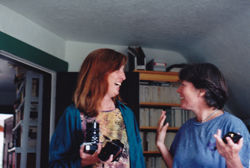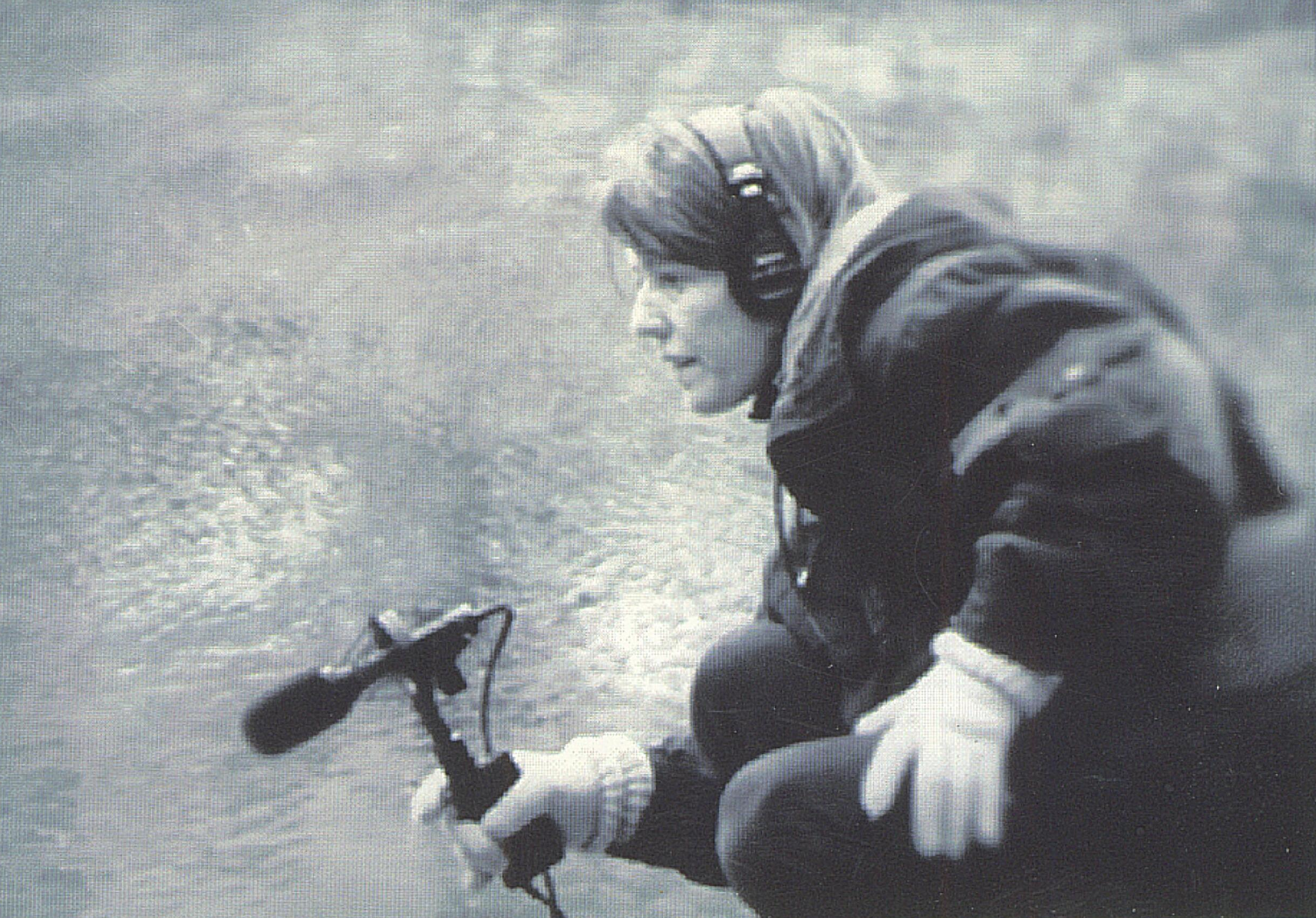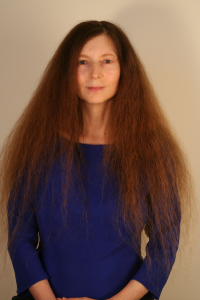Where Water Meets…
I have entitled this article “where water meets…” because each of the pieces I have chosen concerns moments and places at the edge of water. Swimming the Reef (McCartney) is an auditory remembrance of a swim through a reef environment. Hildegard Westerkamp’s Kits Beach Soundwalk begins at Kits Beach in Vancouver, then travels to a world of high frequencies that the beach evokes. Maggie Payne’s Liquid Metal explores the visual, tactile and auditory resonances of the surface of water, meeting air. Welcome to the water’s edge!
The idea of edges meeting is also an important one in both acoustic ecology and feminist theory. Acoustic ecology explores the relationships among sounds within an environment, and soundscape composers do this through the recording of those sounds and their later re-presentation in a somewhat different, heightened, edited or composed form. An early example of this kind of work is Presque rien #1, by Luc Ferrari, in which he worked with the sounds of a beach around sunrise — the edge of water and land, as well as the edge of night and day. Working at the margins of two environments or states allows a soundscape composer to bring attention to what joins them as well as what separates them.
Feminist theory is also concerned with margins and perceptions of different states. Teresa de Lauretis talks of the “doubled consciousness” of women who work with technology, who are at once situated as the subject, rational, ordering reality with technology — as well as stereotypically constructed as the object, irrational, close to Nature. de Lauretis says that this position keeps women filmmakers (and, I would add, electroacoustic composers), always on the edge of these states of mind and always questioning them.
This is not to say that all of the work of these composers concerns itself with environmental edges. All have done a variety of work, which you will see from reading the bios below, and by linking to our websites. As curator of a concert at Concordia University, I sought to explore this particular aspect of our work, to understand better how in this way our edges meet.
4 February 1998
Programme
Andra McCartney — Swimming the Reef (for Patrick) [1990–96]
Beneath the waves, I heard my breathing, heartbeat, pounding surf. The beautiful fish and coral were beyond my ears. This piece transforms their spoken names — tomtate, angelfish, barracuda, fan, brain — to mimic their movements, forms and colours. Surf recorded at Palmiste (Grenada) on All Soul’s Day, 1990.
Hildegard Westerkamp — Kits Beach Soundwalk (1989)
In the late 1970s, I produced and hosted a radio programme on Vancouver Co-operative Radio called Soundwalking, in which I took the listener to different locations in and around the city and explored them acoustically. Kits Beach Soundwalk is a compositional extension of this original idea. Kitsilano Beach — colloquially called Kits Beach, and originally named after the Squamish First Nations Chief X̱ats'alanexw (Khahtsahlano) — is located in the heart of Vancouver. In the summer it is one of the most crowded beaches in Vancouver, packed full of sunbathers. At the time the piece was created, in the late ’80s, it was also filled with music coming from many ghetto blasters, indeed light years away from the silence experienced here not so long ago by its indigenous inhabitants. The original recording on which this piece is based was made on a calm winter morning, when the quiet lapping of the water and the tiny sounds of barnacles feeding were audible before an acoustic backdrop of the throbbing city. In this soundwalk composition we leave the city behind eventually and explore instead the tiny acoustic realm of barnacles, the world of high frequencies, inner space and dreams.
Kits Beach Soundwalk was realized in 1989 in my own studio Inside the Soundscape and was premiered in March 1989 at the Vancouver Art Gallery.
Maggi Payne — Liquid Metal (1994)
I took up canoeing in an effort to “experience nature” and to build up my upper body. I became fascinated with the water patterns visible at such a close-up range. The water had an intimate kind of beauty, very different from water viewed from a greater distance. I captured images for two years before finally sequencing them. It was only in the editing that I fully realized that water actually turns out to be rather “colourless” (the dictionary definition) — especially at close range and especially with the almost constant cloud cover we experienced while filming. The video has no processing whatsoever.
Liquid Metal excerpt ©1994 from Maggi Payne on Vimeo.
The “nature” that I ended up experiencing in large part had to do with human nature. I would have loved to have paddled the California waterways hearing only the sounds of birds, water, etc., but instead much of the sound consisted of Harley Davidsons roaring down a canyon road adjacent to the river, helicopters, the Blue Angels, various prop planes, a train screeching harmonics as it went through turns in a canyon, remote-controlled model airplanes, cars driving over a bridge, jet skis and motorboats with and without waterskiers attached. The music is derived from those sounds, with only a few exceptions (seagulls, falls, wind and waves lapping against the shore).
I wanted to transform those undesirable “natural sounds” into sounds I would probably not mind hearing — or wouldn’t mind hearing in my head while canoeing. I used convolving, phase vocoding, extensive layering and extreme equalizations to accomplish the transformations.
Biographies

Soundscape artist Andra McCartney (1955–2019) created multimedia works, audio postcards, radio art and works for dance. Born in Fleetwood, near Liverpool (United Kingdom), she lived in several other British ports before moving to Canada with her immediate family in 1968: her daughter was born in 1979, her son in 1980. She received a BA in Cultural Studies from Trent University (1983) and an MA in Adult Education from St. Francis Xavier University (1990) before completing her PhD in Music with a dissertation on the work of Hildegard Westerkamp at York University (1999). While living in Toronto, Andra co-hosted Auditory Transitory (CIUT Toronto 89.5), a weekly radio show devoted to soundscape composition and radio art. She lived in several parts of Ontario and northern Canada, moving to Montréal in 1999, where she taught Sound in Media for the Communication Studies department at Concordia University. McCartney has acted as a board member of the Canadian Electroacoustic Community (CEC) and the Canadian Association for Sound Ecology (CASE). [2022]
http://electrocd.com/en/artiste/mccartney_an

Hildegard Westerkamp was born in Osnabrück (Germany) and emigrated to Canada in 1968. Whether as a composer, educator or radio artist, most of her work since the mid-1970s has centred around environmental sound and acoustic ecology. She was a member of the original World Soundscape Project, has taught courses in Acoustic Communication at Simon Fraser University (Vancouver) and has conducted soundscape workshops internationally. She is a founding member and is currently active on the board of the World Forum for Acoustic Ecology (WFAE). Between 1991 and 1995 she was the editor of The Soundscape Newsletter. By focusing the ears’ attention to details both familiar and foreign in the acoustic environment, Westerkamp’s compositional work draws attention to the inner, hidden spaces of the environment we inhabit. [1998]
http://www.hildegardwesterkamp.ca

Maggi Payne is Co-Director of the Center for Contemporary Music at Mills College in Oakland CA, where she teaches recording engineering, composition and electronic music. She also freelances as a recording engineer and editor. She has had performances of her works throughout the United States and Europe, among them the New Music Across America Festival, Composers’ Forum and Experimental Intermedia Foundation (New York), Rensselaer Polytechnic Institute, SEAMUS, Western Front, Siggraph, Texas Tech University, New Langton Arts (San Francisco), New York Museum of Modern Art, Paris Autumn Festival and Bourges Festival (France), and the Autunno Musical in Como (Italy). She has received two Composers’ Grants and an Interdisciplinary Arts Grant from the National Endowment for the Arts, and video grants from the Mellon Foundation and the Western States Regional Media Arts Fellowships Program. Affiliations include BMI, Audio Engineering Society, American Music Center, American Composers Forum, SEAMUS and Electronic Music Foundation. [1998]
http ://www.maggipayne.com
Social top